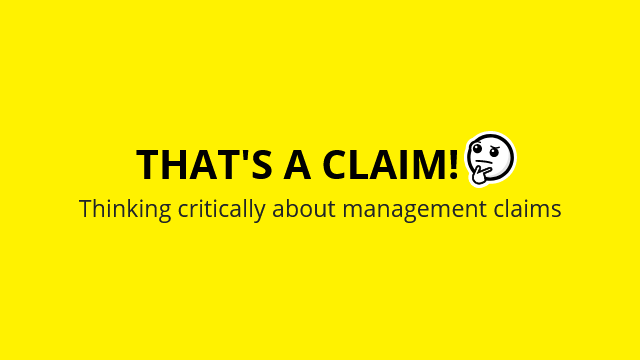
How to write literature reviews for evidence-based knowledge management
This article is part of an ongoing series of articles on evidence-based knowledge management.
As we’ve advised in our evidence-based knowledge management article series, the professional credibility of knowledge management (KM) into the future depends on moving to a better research foundation.
It is important to note that this involves more than just cherry-picking a few pieces of research to support a particular point of view. Because it introduces or perpetuates biases in decision-making, such an approach to the use of research can be just as removed from evidence-based practice as using no research evidence at all. Absolutely every individual piece of research has limitations – it will have been carried out in a particular context, on the basis of particular assumptions, and influenced by the values and beliefs of the author(s) and the publisher. These values and beliefs will have influenced not only the research methodology, but the decision to pursue a particular research topic or direction in the first place.
Because of these limitations, evidence-based practice needs to involve an assessment of the widest possible range of relevant research. A key way of doing so is through carrying out a literature review. In recognition of the value of literature reviews, they are a primary evidence source for RealKM Magazine articles, and I have also published advice to the KM community on how to use two of the main types of literature review – systematic reviews and narrative reviews. That previous advice is important reading before progressing with this article.
This article goes a step further than that previous advice by listing three resources that provide advice and guidance on how to carry out the different types of literature review. The resources can assist both KM practitioners and organisations with a KM capability to carry out a literature review for a topic or area of interest where no up-to-date review currently exists (and many of those already published can be located by searching RealKM Magazine).
1. A simple guide to conducting a narrative literature review
The most straightforward type of literature review for a KM practitioner to carry out is the narrative review. The short resource How to review the evidence: A simple guide to conducting a literature review1 provides guidance and links to additional information to step you through a basic narrative literature review. It will help those unsure of how to go about a literature review, and support practitioners who want to use a literature review to inform the design, delivery, or evaluation of a program, service, or approach to practice. The resource has been developed particularly for people working in the community services sector, but is highly relevant to other sectors including KM.
2. Overview and guidelines – systematic, narrative, and integrative reviews
Also a straightforward guide, the journal article “Literature review as a research methodology: An overview and guidelines“2 provides advice and guidelines in regard to why you should write a literature review, approaches to literature review, the process of conducting a literature review, and how to assess the quality of a literature review.
The article discusses the three main types of literature review used in academic research, which are systematic, semi-systemic (that is, narrative), and integrative reviews. As discussed above, the most straightforward type of literature review for a KM practitioner to carry out is the narrative review. However, organisations with a reasonably-sized KM capability should also consider systematic review, perhaps in partnership with the KM-related department or school of a university. Integrative reviews are discussed below.
3. Guidelines and examples – integrative literature reviews
Integrative literature reviews, also called critical literature reviews, are currently extremely rare in KM-related research, to the point where I’ve only ever referenced one such review in RealKM Magazine. However, they have the potential for greater use given their focus, which is to review, critique, and synthesise representative literature on a topic in an integrated way such that new frameworks and perspectives on the topic are generated. With KM being an emerging set of disciplines, integrative literature reviews could potentially reveal as yet unknown insights and directions. The journal article “Writing Integrative Literature Reviews: Guidelines and Examples“3 provides advice on this approach.
Header image source: Dreamstime.
References:
- Smart, J. (2020). How to review the evidence: A simple guide to conducting a literature review. Melbourne: Australian Institute of Family Studies. ↩
- Snyder, H. (2019). Literature review as a research methodology: An overview and guidelines. Journal of Business Research, 104, 333-339. ↩
- Torraco, R. J. (2005). Writing integrative literature reviews: Guidelines and examples. Human resource development review, 4(3), 356-367. ↩
Also published on Medium.






